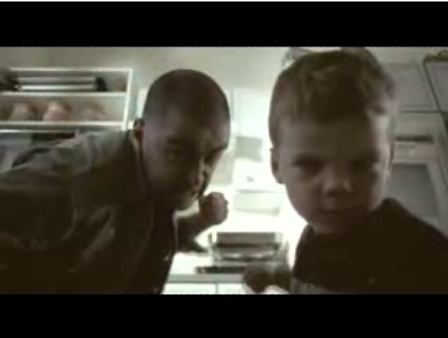Child Friendly Australia is an advocacy initiative launched last year by National Association for Prevention of Child Abuse and Neglect (NAPCAN). Their first advertisement, titled "Children See, Children Do," is aimed at getting parents--and all adults, according to the campaign objectives--to think about the behavior they are modeling for kids. [It's on the YouTube.]
Dads figure prominently/equally in the ad, but other of their commercials seem targeted specifically at dads: "Shaking Baby" and "Writing Baby" in particular. Don't look for a lot of nuance or equivocating, but then, it's not like there's a good way to shake a baby, either.
Child Friendly Australia - Media [childfriendly.org.au via theapt]


that is one intense ad. i wonder if it's edited for TV or if "flipping the bird" is o.k. for viewers down under
Women also need info about the danger of shaking.
Today's Times/Newsday report on a shaking incident that involved a 2 mo. boy - the apparent perpetrator is the mother.
A couple of fairly recent surveys from Holland and North Carolina cast doubt on the conventional wisdom that fathers do most of the shaking, finding that between 2.6 and 5 percent of mothers report shaking or other potentially harmful acts.
It may simply be that males in the household, especially those who are not the biological father, inflict more injury by shaking (or, more properly stated, injuries that are more apparent: there's reason to suspect that for every shaking case that comes to medical attention, there's 2 or 3 other cases that result in mild traumatic brain injuries, with symptoms that don't show until the kid is classified with learning disabilities and your tax dollars are put to work to provide special education for a kid who didn't have to be there...)
Either way, men are a good target for prevention.
The easist way to educate someone is to make them worry about the other caregivers of their child and then give them the ability to educate those caregivers, including recognizing frustration and anger do happen and that a simple coping plan can help any caregiver cope with that frustration.
Given the relative lack of experience that many secondary caregivers gave, especially with a baby or infant experiencing colic, teething or other trigger for crying, mothers should have cause for concern.
For most of us, the best way to learn is to teach someone else. Learning how to prepare those caregivers she worries about gives the mother good cause to learn coping skills herself.
There's ample reason to worry: a 0-3 Foundation survey reported that 75% of children under 3 have at least one additional caregiver. Child care, baby sitter, siblings of the parent or - in some cases - the child, grandparents....
Intended or not, if the focus on men encourages mothers to take the message to the male in their household and make sure they both have a coping plan, Australia's campaign may have struck the right balance.